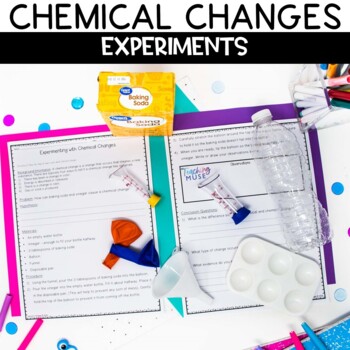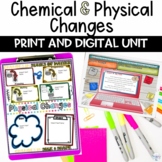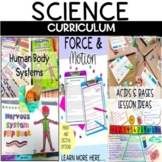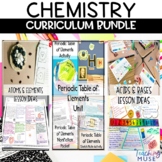Physical and Chemical Changes Lab Activities and Experiments
- Zip
What educators are saying
Also included in
- Teach a unit on chemical and physical changes using these print, digital, and hands-on lessons and activities. Students will learn about characteristics and examples of a physical and chemical change by reading the printable worksheets or digital Google Slide activity. Hands-on and digital activitiePrice $22.25Original Price $31.75Save $9.50
- Looking for a science curriculum to last all school year that will help you teach your physical science, life science, Earth science, and chemistry units? Check out everything this science curriculum has to offer. This year-long science curriculum includes science texts, hands-on activities, classroPrice $326.71Original Price $363.01Save $36.30
- Teach your students about chemistry using these materials that will allow students to read to learn about chemistry concepts and practice what they learned. This Chemistry Bundle includes states of matter, physical and chemical changes, atoms, elements, and the periodic table. This chemistry bundlePrice $100.60Original Price $125.75Save $25.15
Description
Reinforce characteristics and concepts related to physical and chemical changes with these 8 hands-on lab activity experiments. Each activity will further help students learn about physical and chemical changes. Students will make observations and demonstrate their knowledge by making predictions and answering comprehension questions.
Like this physical and chemical changes activity? Check out the unit and save 20%
These lab activities will have students understand:
- How matter changes state
- Examine how our bodies need both changes for digestion to occur
- How a chemical change can remove the shell of an egg while keeping the insides intact
- Different variables lead to decomposition
- Demonstrate that gas is created from baking soda and vinegar
- Illustrate how different substances will produce a color change
- Reaction can produce heat
- Forming new substances - gasses and heat
This physical and chemical changes lesson includes:
- Teacher tips and background information
- Eight hands-on activities
- Naked eggs: Students will remove the shell of an egg while keeping the insides intact.
- Baking soda and vinegar: How does this create a chemical change?
- Hydrogen peroxide and yeast: How does this create a temperature change?
- Color change: Which liquids will produce a color change; hydrogen peroxide, bleach, or vinegar?
- Formation of gas: What happens when you mix hydrogen peroxide, yeast, dish soap, and water?
- Surface area: How does the surface area effect the rate of melting?
- Digestion: Discover how our bodies use physical and chemical changes while digesting our food.
- Decomposition: Learn how different materials change the rate of deterioration in bananas.
- Answer keys
Brand new! The first five activities are available in two versions. The second version will ask students to answer by stating a claim and using evidence from their observations to support their claim. This allows you to integrate ELA skills into your science classroom.
Teacher feedback:
- Learning chemical and physical changes always seems to confuse some of my students. This will definitely help them! Your activities are always so great!
- This is a great bundle of lab activities on chemical and physical changes! These activities look like they will be a lot of fun. I can't wait to try them out!
- Great resource for teaching the core content in the special education classroom!
Other lessons and activities to support this chemical and physical changes unit:
Kindly Note: If you have questions, do not hesitate in emailing me at Teaching Muse Email
PLEASE PREVIEW BEFORE PURCHASING
____________________________________________________________________________________
Thank you for visiting Teaching Muse. I would love for you to become a follower.
Teaching Muse followers receive new product information and discounts on any new items!
____________________________________________________________________________________
All rights reserved by Teaching Muse. This product is to be used by the original downloader ONLY. Copying for more than one teacher, classroom, department, school, or school system is prohibited. Additionally, this product may not be distributed or displayed digitally for public view. Failure to comply is a copyright infringement and violates the Digital Millennium Copyright Act (DMCA). They are intended for classroom and personal use ONLY.








